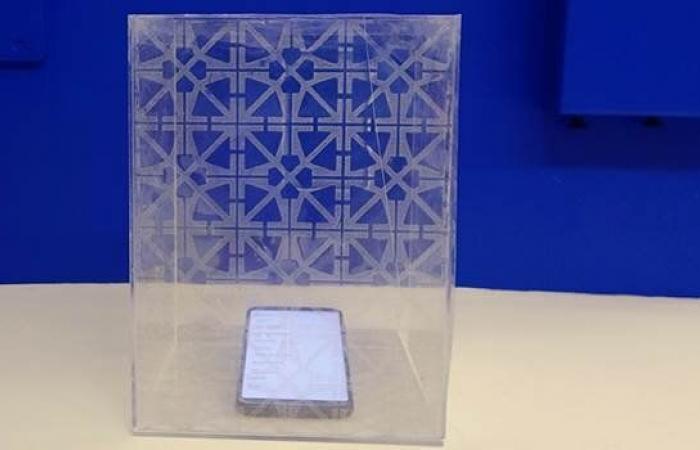A printable ink with an unsurpassed compromise between conductivity and transparency was developed by a KAUST team for use in solar modules and for the novel blocking of electromagnetic waves.
Metals like copper and gold generate little heat when a current flows through them. For this reason, these high conductivity materials are widely used in the electronics industry. Another property of these metals is opacity: they reflect light instead of transmitting it. However, transparency is a useful property in electronic devices that generate, sense, or manipulate electromagnetic radiation.
While there are materials that are both transparent and conductive, there is usually a tradeoff to be made. “A typical problem with optically transparent conductors is that their conductivity is low and the conductivity continues to deteriorate with increasing transparency or vice versa,” explains electrical engineer Atif Shamim.
Shamim and Weiwei Li, a postdoctoral fellow in his group, developed the conductive ink by dispersing silver nanowires in a polymer solution. Working with another KAUST team led by Thomas Anthopoulos, they improved the optical and electrical properties of this ink using a treatment known as xenon flash sintering. “Silver nanowires are usually patterned in several processing steps, and the pattern size is quite limited,” says Shamim. “We demonstrate the large-area structuring of silver nanowires with high throughput in a single step.”
The ink could find important use in optoelectronic applications such as solar cells. But Shamim and his colleague Khaled Salama used it in a device for a different application: blocking electromagnetic waves. As society becomes more dependent on wireless communications, so does the risk of system failure due to interference. And there are also unanswered questions about the implications for human health, especially for newborns and vulnerable patients.
With this in mind, Shamim and the team created a structure known as a frequency selective surface (FSS). As the name suggests, this reflects electromagnetic waves of a certain frequency while others pass through them. The KAUST team created an FSS by depositing its bespoke conductive ink in a simple repeating pattern on a flexible polymer substrate.
The experimental characterization of the FSS showed decent reflective performance over two bands in the high frequency part of the electromagnetic spectrum. And while typical FSS only block waves with a certain polarization coming from a certain direction, the KAUST FSS was insensitive to the polarization of radio waves and its performance was stable over a wide range of angles of incidence. Another positive aspect is that the printed FSS was completely flexible: its response did not deteriorate when the material was rolled up.
To demonstrate the practicality of their shield, they placed a cellphone in a box covered by the FSS and observed a significant decrease in signal strength. “Based on these promising results, we plan to expand our applications for flexible, transparent and high-performance electronic devices,” says Shamim. “For example, we would like to apply the thin, transparent FSS to a glass incubator in a hospital setting and conduct electromagnetic shielding experiments to further characterize our design in a real-world environment.”
Baby steps for transparent electronics
Weiwei Li et al. Highly transparent and conductive electrodes made possible by scalable printing and sintering of silver nanowires, nanotechnology (2020). DOI: 10.1088 / 1361-6528 / ab9c53
Yiming Yang et al. Polarization-insensitive and transparent frequency-selective surface for dual-band GSM shielding, IEEE transactions on antennas and propagation (2020). DOI: 10.1109 / TAP.2020.3032827
Provided by King Abdullah University of Science and Technology
Quote: A printable ink that is both conductive and transparent also blocks radio waves (2020 November 2) posted on November 2, 2020 from https://phys.org/news/2020-11-printable-ink-transparent -blocks-radio.html were retrieved
This document is subject to copyright. Except for fair trade for the purpose of private study or research, no part may be reproduced without written permission. The content is provided for informational purposes only.
These were the details of the news A printable ink that is both conductive and transparent will also... for this day. We hope that we have succeeded by giving you the full details and information. To follow all our news, you can subscribe to the alerts system or to one of our different systems to provide you with all that is new.
It is also worth noting that the original news has been published and is available at de24.news and the editorial team at AlKhaleej Today has confirmed it and it has been modified, and it may have been completely transferred or quoted from it and you can read and follow this news from its main source.


